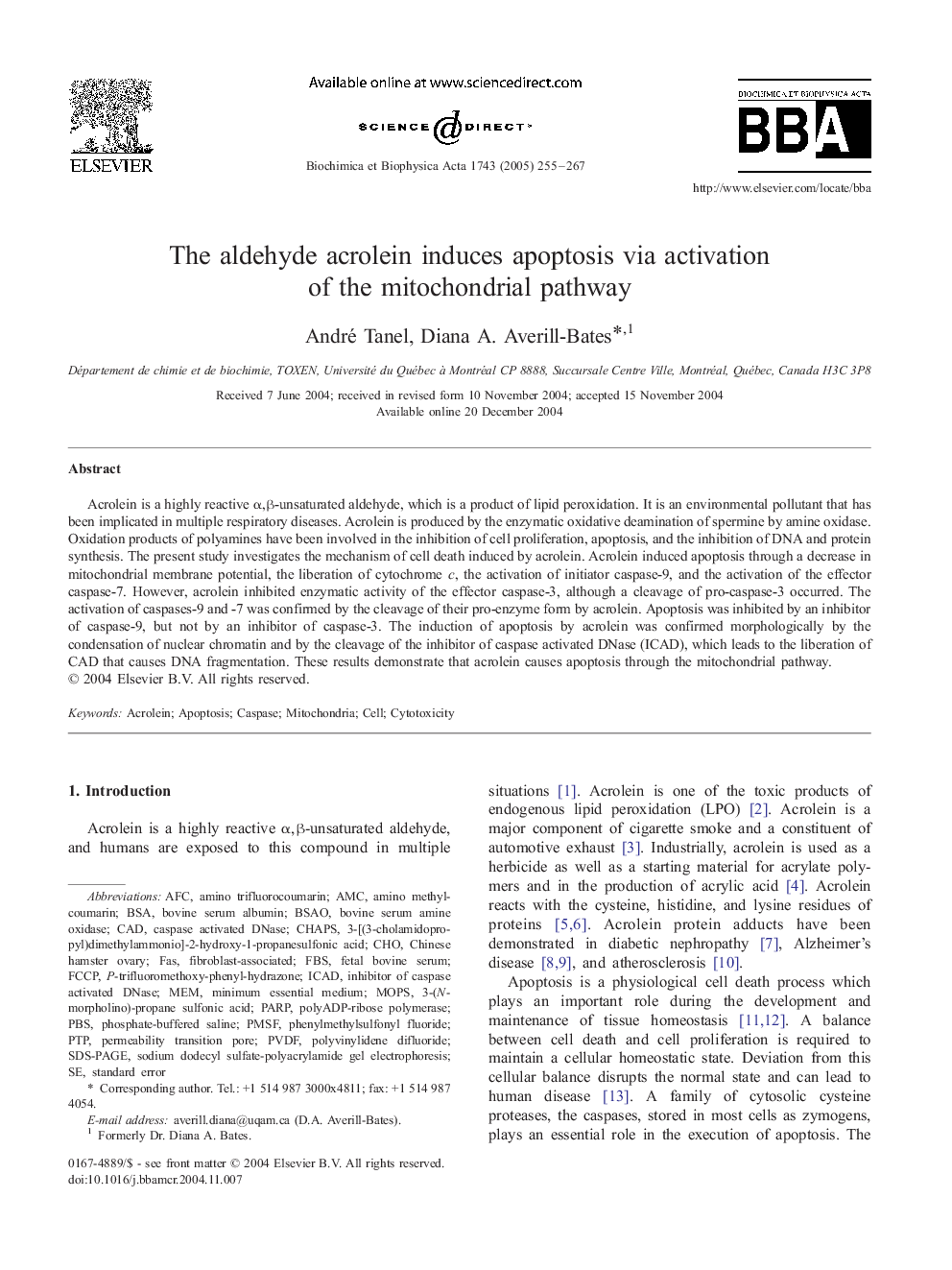| Article ID | Journal | Published Year | Pages | File Type |
|---|---|---|---|---|
| 10803220 | Biochimica et Biophysica Acta (BBA) - Molecular Cell Research | 2005 | 13 Pages |
Abstract
Acrolein is a highly reactive α,β-unsaturated aldehyde, which is a product of lipid peroxidation. It is an environmental pollutant that has been implicated in multiple respiratory diseases. Acrolein is produced by the enzymatic oxidative deamination of spermine by amine oxidase. Oxidation products of polyamines have been involved in the inhibition of cell proliferation, apoptosis, and the inhibition of DNA and protein synthesis. The present study investigates the mechanism of cell death induced by acrolein. Acrolein induced apoptosis through a decrease in mitochondrial membrane potential, the liberation of cytochrome c, the activation of initiator caspase-9, and the activation of the effector caspase-7. However, acrolein inhibited enzymatic activity of the effector caspase-3, although a cleavage of pro-caspase-3 occurred. The activation of caspases-9 and -7 was confirmed by the cleavage of their pro-enzyme form by acrolein. Apoptosis was inhibited by an inhibitor of caspase-9, but not by an inhibitor of caspase-3. The induction of apoptosis by acrolein was confirmed morphologically by the condensation of nuclear chromatin and by the cleavage of the inhibitor of caspase activated DNase (ICAD), which leads to the liberation of CAD that causes DNA fragmentation. These results demonstrate that acrolein causes apoptosis through the mitochondrial pathway.
Keywords
MOPSPTPAmCPMSFAFCFASFCCPPARPICADPVDFBSAOFBSPBScaspase activated DNase3-(N-morpholino)-propane sulfonic acidBSAbovine serum albuminBovine serum amine oxidaseAcroleinPermeability transition poresodium dodecyl sulfate-polyacrylamide gel electrophoresisSDS-PAGEChoChinese Hamster Ovaryminimum essential mediumApoptosisstandard errorpolyvinylidene difluoridefetal bovine serumCytotoxicityCADphenylmethylsulfonyl fluorideMEMPhosphate-buffered salineMitochondriapolyADP-ribose polymeraseCHAPScaspaseCell
Related Topics
Life Sciences
Biochemistry, Genetics and Molecular Biology
Biochemistry
Authors
André Tanel, Diana A. Averill-Bates,
